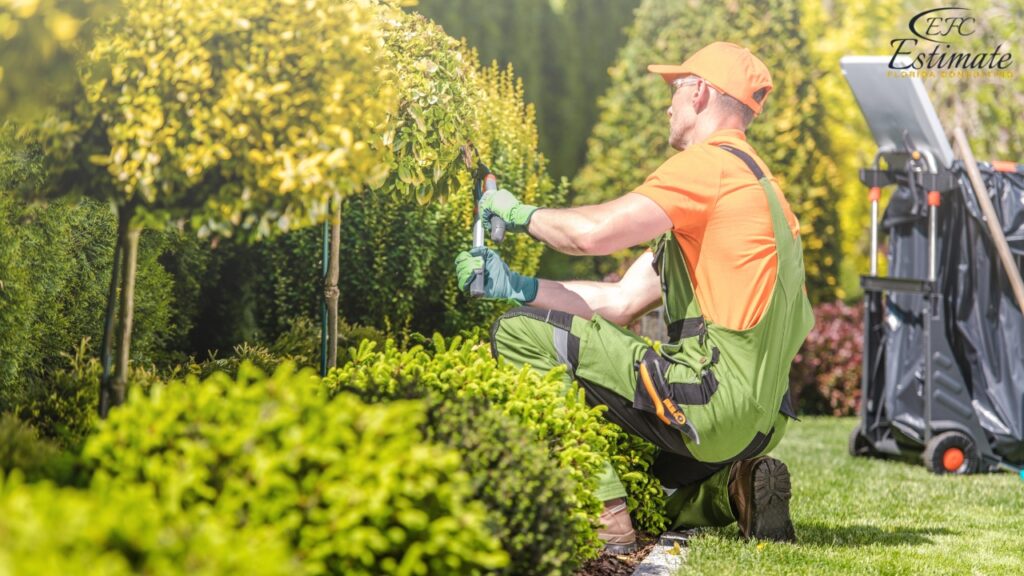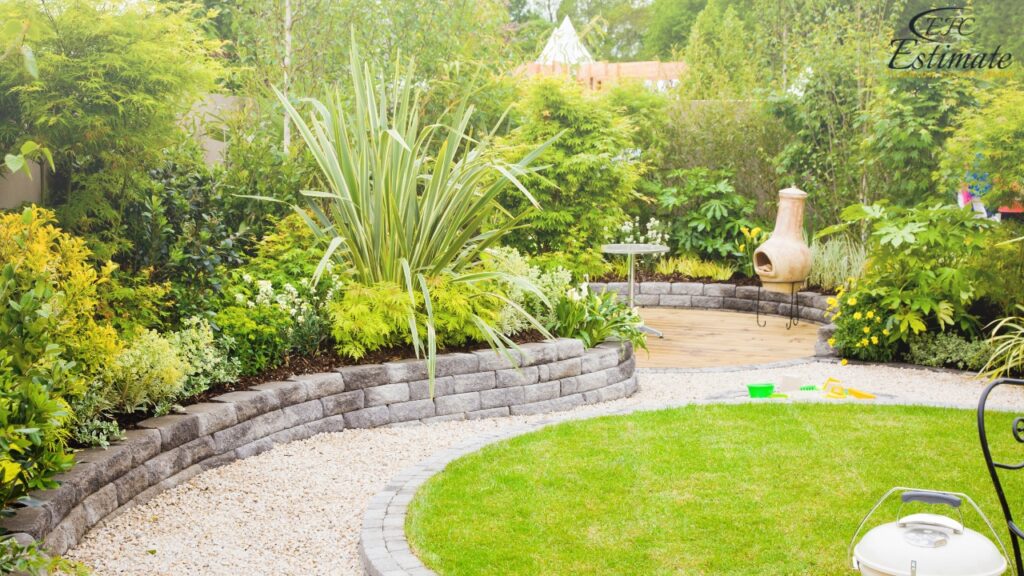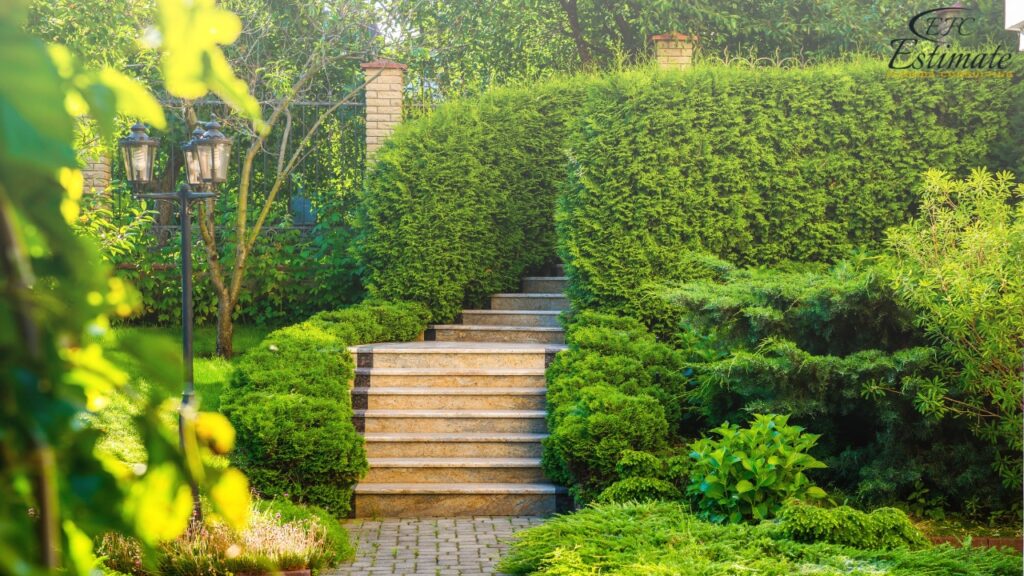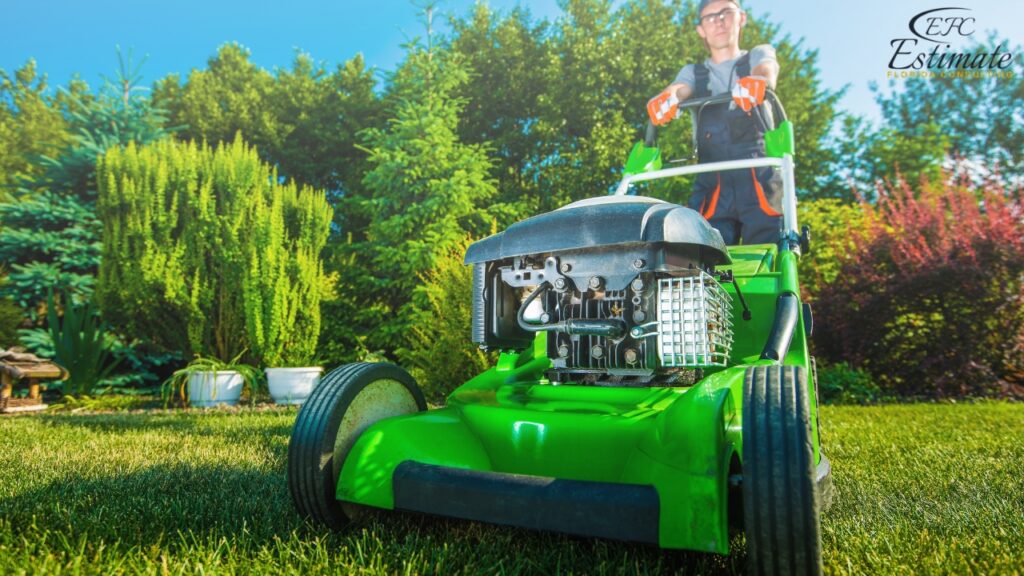How Much Does Landscaping Cost for a Small Yard?
Landscaping a small yard typically costs between $5,800 and $41,500, averaging $4 to $20 per square foot. This estimate includes design, materials, labor, and installation of elements like plants, trees, sod, irrigation systems, and walkways. Costs can vary based on the complexity of the design, quality of materials, and local labor rates. Additional expenses may arise from features like patios, retaining walls, or water features. Investing in professional landscaping enhances your yard’s aesthetic appeal, functionality, and value. Proper planning and budgeting ensure a beautiful and sustainable outdoor space tailored to your preferences and needs.

Cost Breakdown for Landscaping a Small Yard
Planning and Design
Planning and design costs include hiring a landscape designer or architect to create a detailed plan for your yard. Here’s an estimate of planning and design costs:
Service | Cost Range |
Landscape Design Plan | $500 – $2,500 |
Consultation Fee | $50 – $150 per hour |
The planning and design phase is crucial for ensuring a cohesive and functional landscape. A well-thought-out design can help avoid costly mistakes and ensure that the final result meets your expectations. Professional designers can also provide valuable insights and recommendations based on their experience. Investing in a comprehensive design plan can streamline the project and help identify potential challenges early on, saving time and money in the long run. Detailed plans also allow for accurate cost estimates and better resource management.
Materials
The cost of materials can vary widely based on the type and quality chosen. Here’s an estimate of material costs for a small yard:
Material | Cost Range |
Grass (sod or seed) | $0.30 – $2.00 per sq ft |
Plants and Shrubs | $20 – $100 per plant |
Soil and Mulch | $30 – $60 per cubic yard |
Pavers and Stones | $10 – $20 per sq ft |
Decorative Elements | $50 – $500 each |
Choosing the right materials is essential for achieving the desired look and ensuring the longevity of your landscaping. High-quality materials may have a higher upfront cost but can save money in the long run by reducing maintenance needs and replacements. Additionally, using materials that complement the local environment can enhance the sustainability of the landscape. Selecting native plants and eco-friendly materials can further reduce maintenance costs and support local biodiversity. Careful selection of materials can also enhance the aesthetic appeal and functionality of the yard, making it a more enjoyable space.
Labor
Labor costs for landscaping vary based on the complexity of the project and local labor rates. Here’s an estimate of labor costs:
Labor Task | Cost Range |
Basic Landscaping Services | $50 – $100 per hour |
Planting and Mulching | $30 – $50 per hour |
Hardscaping Installation | $50 – $100 per hour |
Total Labor Cost | $500 – $5,000 |

Professional landscaping services can ensure that the project is completed efficiently and to a high standard. Skilled labor is particularly important for tasks such as hardscaping and installing irrigation systems. Quality workmanship can significantly impact the durability and appearance of the finished landscape. Professional landscapers can also provide ongoing maintenance services, ensuring the yard remains in excellent condition over time. Their expertise in selecting the right plants and materials can optimize the yard’s functionality and aesthetic appeal, adding value to the property.
Additional Features
Additional features such as lighting, irrigation systems, and water features can enhance your yard but will also add to the cost. Here’s an estimate of additional feature costs:
Feature | Cost Range |
Landscape Lighting | $2,000 – $4,000 |
Irrigation System | $2,500 – $4,000 |
Small Water Feature | $1,000 – $5,000 |
Outdoor Furniture | $500 – $3,000 |
Incorporating additional features can create a more functional and aesthetically pleasing yard. These features can also increase the usability of the space, making it more enjoyable for relaxation and entertaining. Thoughtful selection of features can transform the yard into an inviting outdoor living area. Features like landscape lighting can enhance safety and extend the usability of the yard into the evening hours. An irrigation system ensures that plants receive adequate water, reducing maintenance efforts and promoting healthy growth. Water features can add a tranquil element to the landscape, creating a serene environment.
Hardscaping Elements
Hardscaping elements such as pathways, patios, and retaining walls add structure and function to your landscape. Here’s an estimate of hardscaping costs:
Hardscaping Element | Cost Range |
Pathways | $10 – $30 per sq ft |
Patios | $15 – $50 per sq ft |
Retaining Walls | $20 – $60 per sq ft |
Hardscaping provides a durable and attractive framework for your landscape. These elements can define different areas of the yard and enhance accessibility. Quality hardscaping materials and professional installation are crucial for creating long-lasting features. Patios and pathways offer functional spaces for walking and outdoor activities, while retaining walls can address elevation changes and prevent soil erosion. Hardscaping features also contribute to the overall aesthetic appeal of the yard, making it a more enjoyable space for outdoor living and entertaining.
Get 5 New Leads Next 7Days With Our System
- Multi-Family Building
- Hotel Building
- Hospital Building
- Warehouse Building
- High-Rise Building
- Shopping Complex
Seasonal Planting
Seasonal planting involves choosing plants that thrive in different seasons to ensure year-round appeal. Here’s an estimate of seasonal planting costs:
Seasonal Planting | Cost Range |
Spring Plants | $200 – $1,000 |
Summer Plants | $200 – $1,000 |
Fall Plants | $200 – $1,000 |
Winter Plants | $200 – $1,000 |
Seasonal planting adds color and variety to your landscape throughout the year. Selecting the right plants for each season ensures continuous bloom and visual interest. Additionally, seasonal plants can attract pollinators and support local wildlife. Incorporating a variety of plants that bloom at different times can create a dynamic and visually appealing landscape. Seasonal plants can also enhance the ecological balance of the yard, providing habitat and food sources for beneficial insects and animals. Regular updates to the planting scheme can keep the yard looking fresh and vibrant year-round.
Factors Influencing the Cost of Landscaping
Yard Size
The size of the yard is a primary factor influencing the cost of landscaping. A smaller yard will generally cost less to landscape than a larger one, but the specific design elements and materials chosen can significantly affect the overall cost. The complexity of the landscape design also plays a role in determining the final cost. Additionally, the dimensions of the yard can influence the type and quantity of materials needed, as well as the labor required to complete the project. Smaller yards may allow for more intricate designs and higher-quality materials within a limited budget.

Design Complexity
The complexity of the landscaping design can greatly impact the cost. Simple designs with basic elements such as grass, a few plants, and minimal hardscaping will be more affordable than intricate designs featuring various plants, hardscaping elements, water features, and lighting. Custom designs tailored to specific preferences can also increase the cost. Detailed designs that require specialized skills or materials can add to the overall expenses. For example, incorporating features like pergolas, outdoor kitchens, or elaborate garden paths can significantly increase the complexity and cost of the project.
Materials
The materials used in landscaping, including plants, soil, mulch, stones, and pavers, vary in price. Choosing high-quality materials can enhance the durability and aesthetic appeal of your yard but will also increase the cost. The type of plants selected, whether they are common or exotic species, can also impact the overall expenses. Materials like high-end pavers or decorative stones can add to the cost but provide a more polished look. Additionally, the choice of materials can affect the long-term maintenance and sustainability of the landscape, with some options requiring less upkeep and offering greater longevity.
Labor
Labor costs for landscaping depend on the complexity of the project and local labor rates. Hiring professional landscapers can ensure a high-quality result, but it will add to the overall cost. DIY landscaping can save on labor costs but requires time, effort, and some level of expertise. The scope of the work, including tasks like planting, installing irrigation, and building hardscape features, affects the labor costs. Professional landscapers bring expertise and efficiency to the project, potentially completing it faster and with higher quality than DIY efforts. However, their services come at a premium, reflecting their skill and experience.
Benefits of Landscaping a Small Yard
Enhanced Curb Appeal
Landscaping can significantly enhance the curb appeal of your home, making it more attractive to visitors and potential buyers. A well-landscaped yard creates a positive first impression and can increase the value of your property. Improved curb appeal can make your home stand out in the neighborhood and attract more interest if you decide to sell. A visually appealing yard can also instill a sense of pride in homeowners, contributing to overall satisfaction with the property.
Improved Functionality
A well-designed landscape can improve the functionality of your yard by creating designated areas for different activities, such as relaxing, dining, and gardening. Properly planned landscaping can make the most of your outdoor space, even if it is small. Functional landscaping can also improve the flow and usability of the yard, making it more enjoyable for daily use. Creating distinct areas for specific purposes can enhance the overall experience of spending time outdoors, whether for leisure, exercise, or socializing.
Environmental Benefits
Landscaping can provide environmental benefits such as reducing soil erosion, improving air quality, and promoting biodiversity. Using native plants and sustainable practices can further enhance these benefits and create a more eco-friendly yard. Environmentally conscious landscaping can also reduce water usage and maintenance needs, contributing to a more sustainable lifestyle. By incorporating drought-tolerant plants and efficient irrigation systems, homeowners can minimize their environmental footprint while maintaining a beautiful yard. Additionally, creating a habitat for local wildlife can support ecosystem health and increase biodiversity.
Personal Enjoyment
A beautifully landscaped yard can provide a peaceful retreat and a place to enjoy nature. It offers a space for outdoor activities, relaxation, and socializing, enhancing your overall quality of life. Personal enjoyment is a significant benefit of landscaping, as it creates a pleasant and inviting outdoor environment that you can enjoy year-round. A well-designed yard can become an extension of your living space, providing a sanctuary where you can unwind and connect with nature. Incorporating elements such as comfortable seating, ambient lighting, and attractive plantings can enhance the overall ambiance and make the yard a favorite spot for relaxation and recreation.

Considerations Before Landscaping
Budget
Determine a budget for your landscaping project to ensure you can cover all costs without overspending. A clear budget helps prioritize essential elements and manage resources effectively. Sticking to a budget can also help avoid unexpected expenses and ensure the project stays on track financially. Setting a realistic budget allows for careful planning and allocation of funds to different aspects of the project, ensuring that key elements are prioritized. Additionally, having a budget can guide decision-making and help balance desired features with financial constraints.
Climate and Soil
Consider the local climate and soil conditions when selecting plants and materials. Choosing plants that thrive in your region can reduce maintenance costs and ensure a successful landscape. Understanding your soil type can also help select the right plants and amendments to support healthy growth. Tailoring the landscape to the local climate and soil conditions can improve plant health and longevity, reducing the need for replacement and extensive care. Proper soil preparation and selection of climate-appropriate plants can enhance the sustainability and resilience of the landscape.
Maintenance
Plan for the ongoing maintenance of your landscaped yard. Some designs and materials require more upkeep than others, so choose options that align with your available time and resources for maintenance. Regular maintenance is crucial for keeping the landscape looking its best and ensuring the longevity of plants and hardscaping features. Considering the maintenance requirements of different plants and materials during the planning phase can help create a landscape that fits your lifestyle. Additionally, investing in automated systems like irrigation can simplify maintenance and ensure consistent care for your plants.
Professional Help
Decide whether to hire professional landscapers or undertake the project yourself. Professionals can provide expertise, efficiency, and quality results, but DIY landscaping can be more cost-effective if you have the skills and knowledge. Evaluating the complexity of the project and your own capabilities can help determine the best approach. Professional help can be particularly valuable for complex designs, hardscaping, and installation of systems like irrigation and lighting. DIY projects, while potentially more affordable, require careful planning, research, and execution to achieve satisfactory results. Consider the potential challenges and benefits of each approach to make an informed decision that aligns with your goals and resources.
Download Template For Landscaping Services Project Breakdown
- Materials list updated to the zip code
- Fast delivery
- Data base of general contractors and sub-contractors
- Local estimators

Conclusion
Landscaping a small yard involves various costs related to planning, materials, labor, and additional features. By understanding these costs and considering factors such as design complexity, materials, and maintenance, homeowners can effectively budget for their landscaping projects. Investing in professional landscaping services can ensure a high-quality result that enhances the beauty and functionality of your yard. Proper planning and careful selection of materials and features can create a stunning and enjoyable outdoor space that adds value to your home and enriches your living experience. A well-executed landscaping project can transform your small yard into a vibrant and inviting oasis, providing a space for relaxation, recreation, and socializing. By carefully considering all aspects of the project and making informed decisions, homeowners can achieve a beautiful and functional landscape that meets their needs and preferences.
FAQs
Landscaping a small yard typically costs between $5,800 and $41,500, averaging $4 to $20 per square foot. This estimate includes design, materials, labor, and installation of elements like plants, trees, sod, irrigation systems, and walkways.
Key factors include the complexity of the design, quality of materials, local labor rates, yard size, and any additional features like patios, retaining walls, or water features.
- Planning and Design: Costs range from $500 to $2,500 for a design plan and $50 to $150 per hour for consultation.
- Materials: Costs vary widely, e.g., grass ($0.30 to $2.00 per sq ft), plants ($20 to $100 each), and pavers ($10 to $20 per sq ft).
- Labor: Basic landscaping services range from $50 to $100 per hour, with total labor costs between $500 and $5,000.
- Additional Features: Landscape lighting ($2,000 to $4,000), irrigation systems ($2,500 to $4,000), and small water features ($1,000 to $5,000).
Additional costs can include landscape lighting ($2,000 to $4,000), irrigation systems ($2,500 to $4,000), small water features ($1,000 to $5,000), and outdoor furniture ($500 to $3,000).
Smaller yards generally cost less to landscape, but the specific design elements and materials chosen can significantly affect the overall cost. Smaller spaces may allow for more intricate designs and higher-quality materials within a limited budget.
Simple designs with basic elements are more affordable, while intricate designs with various plants, hardscaping elements, water features, and lighting increase the cost. Custom designs tailored to specific preferences can also raise the expenses.
Material costs vary widely, for example, grass (sod or seed) ranges from $0.30 to $2.00 per sq ft, plants and shrubs from $20 to $100 each, soil and mulch from $30 to $60 per cubic yard, and pavers and stones from $10 to $20 per sq ft.
Benefits include enhanced curb appeal, improved functionality, environmental benefits, and personal enjoyment. A well-landscaped yard can increase property value, create a more enjoyable outdoor space, and support local biodiversity.
Google Reviews



Process To Get Landscaping Cost for a Small Yard Estimate Report
Here I am going to share some steps to get landscaping cost for a small yard estimate report.
-
You need to send your plan to us.
You can send us your plan on info@estimatorflorida.com
-
You receive a quote for your project.
Before starting your project, we send you a quote for your service. That quote will have detailed information about your project. Here you will get information about the size, difficulty, complexity and bid date when determining pricing.
-
Get Estimate Report
Our team will takeoff and estimate your project. When we deliver you’ll receive a PDF and an Excel file of your estimate. We can also offer construction lead generation services for the jobs you’d like to pursue further.

